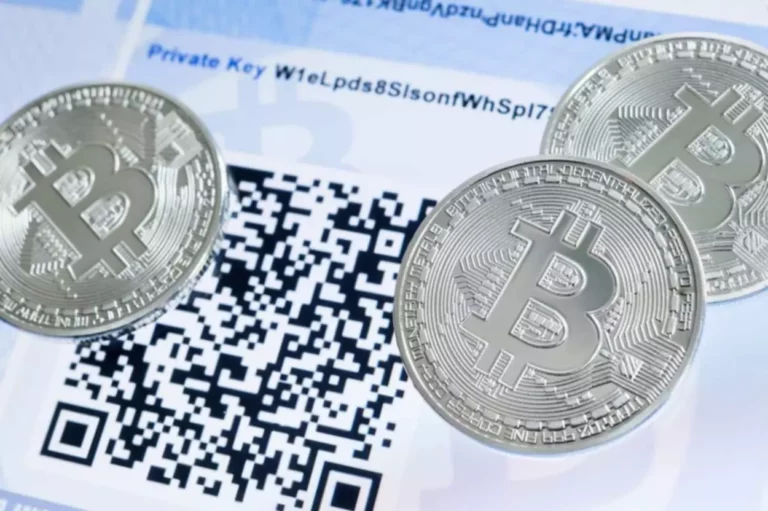Crypto Coins vs Tokens Understanding the Differences
October 10th, 2023
Content
Unlike crypto coins, tokens aren’t mined; https://www.xcritical.com/ they are created and distributed by the project developer. Once tokens are in the hands of purchasers, they can be used in countless ways. These crypto coins are primarily designed to store value and work as a medium of exchange, similar to traditional currencies. This is why crypto coins are also referred to as cryptocurrencies. It’s vital to keep up with the latest in coins, tokens, and blockchain.
How can tokens and cryptocurrencies impact the digital economy?
As of writing this section, it’s the third-largest crypto asset, right after Bitcoin and Ethereum, and it possesses a market capitalization of over $78 billion. In addition, as I mentioned before, one Tether will always be worth one US dollar in value and will never change. One of the other unique things about coins is the way they come into being. Generally, crypto crypto coin vs token coins are either mined using a Proof of Work (PoW) consensus mechanism or earned via a Proof of Stake (PoS) mechanism. But, if you’re into short-term trading for quick gains, tokens might be better.
Which of these is most important for your financial advisor to have?
Another popular use case for utility tokens is as decentralized voting instruments in DAOs. Who knows, you might come Payment gateway up with the next best use-case yet. A great example of this is Uniswap, a completely decentralized and automated crypto exchange. It uses UNI as its native token, an ERC-20 supported by the Ethereum blockchain.
Token vs Cryptocurrency: Understanding the Key Differences
- They can be used for many things, like accessing services or voting.
- Cryptocurrencies markets are unregulated services which are not governed by any specific European regulatory framework (including MiFID) or in Seychelles.
- And usually, that means reporting any capital gains or losses on Form 8949 and carrying over the appropriate amount to Form 1040 Schedule D.
- For now, it should suffice to say that smart contracts are an essential part of the Ethereum network.
- Cryptocurrencies facilitate fast, secure, and borderless transactions, potentially revolutionizing cross-border payments and traditional financial systems.
As for proof of stake, two popular examples include Ethereum’s ETH and Cardano’s ADA. Both of these coins had a pre-mine, meaning some or all of the supply was created at inception. Instead of miners using computing power to secure the network, PoS blockchains rely on “validators” to secure the network by locking up or “staking” tokens.
Each blockchain’s network activity is denominated in one—and only one—native cryptocurrency. For example, the Bitcoin network’s native cryptocurrency is bitcoin (BTC), Ethereum’s is ether (ETH), and Solana’s is solana (SOL). Ethereum extends blockchain technology to facilitate smart contracts and decentralised applications, beyond mainly being a store of value. Another great example would be the earlier-mentioned Ethereum coin, and its well-known token called Shiba Inu.

These days, there are multiple different ways of how crypto enthusiasts can trade their favorite coins and tokens. You should also know the most common uses for both coins and tokens. Coins are most often used simply as money; however, some coins do have other uses. These include being used to fuel applications, being used as a stake to validate a transaction on a network, or being used to fuel smart contract and token transactions. As is the case with traditional financial instruments, many different types of crypto coins and tokens exist.
Ethereum’s network saw a 99% power consumption decrease after switching to PoS, as it no longer has miners (which are used for PoW mechanisms) verifying transactions. Additionally, PoS consensus is more secure than PoW in terms of preventing 51% of attacks, since an attempted 51% attack would cost more, making it difficult to achieve. Explore the key differences between Ethereum and Ripple, two blockchainheavyweights revolutionising decentralised apps and cross-border payments. Smart contracts are basically automated agreements between two or more parties. I won’t go too in-depth into the topic, but if you’re interested to learn more about it, you can check out the section “What are Smart Contracts?”.

While these terms are often used interchangeably, it is essential to understand their distinctions to navigate the rapidly evolving digital economy effectively. Crypto tokens are usually made available to investors in an ICO (initial coin offering). There are a multitude of utility tokens that each have unique purposes. Chainlink (LINK) incorporates real-time data like traffic and weather into smart contracts. Arweave (AR) is a new, secure data storage solution that incentivizes users to store data for long periods of time.
Choosing between coins and tokens is key when trading cryptocurrencies. Coins, like Bitcoin and Ethereum, are stable and well-established. Tokens, however, are more volatile but could offer bigger profits. From finance to gaming, these digital assets are reshaping our world.
Tokens, however, exhibit greater versatility by representing diverse assets and utilities within specific projects. They enable innovative fundraising mechanisms like ICOs and STOs, fostering capital influx for startups and enterprises. Crypto coins are intrinsic to native blockchains, acting as a means of exchange. The coin suffix hints at the tokens’ design to act as a medium of exchange. Crypto coins have volatile prices dictated by the supply/demand dynamic.
They tend to be less volatile than tokens, and also less frivolous—but that’s not always the case. If you’re analyzing coins, it’s always clever to look at the technical side of how the network operates, such as its consensus mechanism. This gives you an insight into where that native coin is going, and whether the participant responsible for processing transactions is doing so effectively. To explain, coins provide the necessary basis of a blockchain network’s security model. As you might already know, blockchains require crypto miners or validators to secure the network and process transactions. But creating a decentralized blockchain isn’t as easy as it sounds.
They are less volatile than the unpredictable token market. Cryptocurrency tokens have grown beyond just being digital money. They now help us access decentralized services, power in-game economies, and enable governance in DAOs. And depending on the cryptocurrency or token’s characteristics and purpose, it could fall under numerous regulations. Tokens enable decentralized finance (DeFi) and empower individuals to take control of their financial lives. Cryptocurrencies facilitate fast, secure, and borderless transactions, potentially revolutionizing cross-border payments and traditional financial systems.
Financial regulators worldwide are trying to keep up with the fast growth and new ideas in cryptocurrency. They are looking closely at how to classify digital assets, if initial coin offerings (ICOs) are legal, and how to watch over cryptocurrency exchanges. To get through this, you need to be careful and keep up with the latest news. In summary, trading cryptocurrency coins offers stability, a solid infrastructure, and real-world use.
A medium of exchange is an asset used to acquire goods or services. A store of value is an asset that can be held or exchanged for a fiat currency at a later date without incurring significant losses in terms of purchasing power. Comparing these two tokens is challenging because they offer different benefits.
As a rule, tokens are more suitable for trading, while crypto coins can be used for investment. Also, tokens can have multiple use cases and are more versatile. On the other hand, crypto coins are more secure due to the underlying infrastructure and are less prone to price manipulation.



